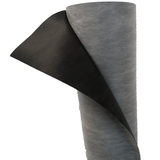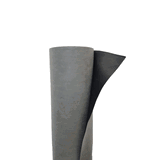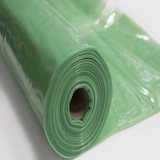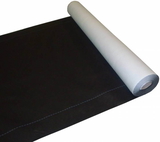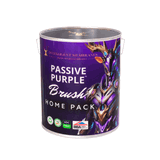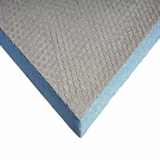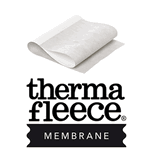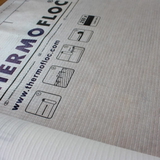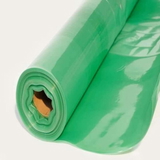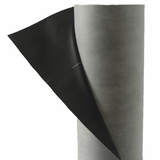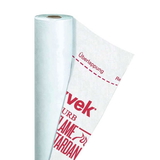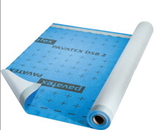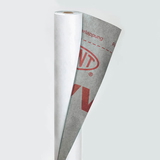- Blogs
- How To Avoid Moisture In Walls And Roofs?
How To Avoid Moisture In Walls And Roofs?

Moisture is one of the biggest enemies of any building. It can cause condensation, dampness, mould, rot, and structural damage. Moisture can also reduce the thermal performance and energy efficiency of your insulation, making your home colder and more expensive to heat.
So, how can you prevent moisture from getting trapped in your walls and roofs? The answer is to use the right combination of insulation, vapour barriers, and breather membranes. These are the key components of a well-designed and well-installed building envelope that can protect your home from external and internal sources of moisture.
In this article, we will explain what these components are, how they work, and how to choose and install them correctly. We will also give you some tips and best practices to avoid common mistakes and problems. By following this guide, you will be able to create a comfortable, healthy, and energy-efficient home that is free from moisture issues.
What is insulation and why do you need it?
Insulation is the material that you use to fill the gaps and spaces in your walls and roofs. It helps to reduce the heat loss and heat gain through the building envelope, keeping your home warmer in winter and cooler in summer. Insulation also helps to reduce noise transmission and improve the fire resistance of your home.
There are many types of insulation available, such as mineral wool, fibre glass, wood fibre, and sheep’s wool. Each type has its own advantages and disadvantages, depending on the application, cost, performance, and environmental impact. You can find more information about the different types of insulation on our website Buy Insulation Online.
The amount and type of insulation that you need depends on several factors, such as the size, shape, and orientation of your home, the local climate, the building regulations, and your personal preferences. You can use online tools such as the U-value calculator to estimate the optimal insulation level for your home.
What is a vapour barrier and why do you need it?
A vapour barrier is a layer of material that is used to stop or limit the amount of moisture that can travel through the walls, floors, or ceilings. It is usually made of plastic or foil, and it is installed on the warm side of the insulation, or the internal side of the heated zone.
The purpose of a vapour barrier is to prevent condensation in the cavities and the insulation, which can lead to rotting, mould, and reduced insulation value. Condensation occurs when warm, moist air from the inside of the home meets a cold surface, such as the underside of the roof or the outer wall. The air cools down and releases some of the water vapour that it contains, forming droplets of water.
A vapour barrier prevents this by creating a seal that blocks the passage of water vapour while allowing the passage of air. This way, the moisture stays in the living space, where it can be removed by ventilation or dehumidification.
A vapour barrier is always required when you are insulating the house on the inside, unless the insulation already has a vapour-resistant layer. In that case, you need to seal the gaps and seams with a special vapour barrier tape. You also need to be careful not to pierce or damage the vapour barrier with wires, pipes, or nails, as this would create holes that would allow moisture to escape.
A vapour barrier is not the same as an air barrier, which is a layer of material that is used to stop or limit the amount of air that can leak through the building envelope. Air leakage can also cause condensation, as well as heat loss and draughts. An air barrier is usually made of plasterboard, plywood, or OSB, and it is installed on the inner side of the vapour barrier, or the internal side of the insulation. An air barrier needs to be continuous and airtight, and it needs to be sealed with tape, mastic, or foam around the edges and openings.
What is a breather membrane and why do you need it?
A breather membrane is a layer of material that is used to protect the sheathing and frame of the building from external moisture, such as rain, snow, and dust. It is usually made of synthetic fabric or paper, and it is installed on the cold side of the insulation, or the external side of the heated zone.
The main function of a breather membrane is to act as a secondary protection membrane and a water barrier, in case the main outer lining of the building, such as roof tiles or cladding, is not completely watertight or resistant to moisture ingress. A breather membrane also helps to prevent wind uplift and damage to the roof tiles or cladding.
However, a breather membrane is not just a barrier, it is also a filter. It allows the insulated structure to release excess moisture vapour into the atmosphere while preventing the penetration of external moisture and impurities. This way, the breather membrane keeps the internal components of the wall and roof structures dry and free from rot and mould.
A breather membrane is also not the same as a waterproof membrane, which is a layer of material that is used to make the roof or wall completely watertight and impermeable. A waterproof membrane is usually made of bitumen, rubber, or plastic, and it is installed on the cold side of the insulation, or the external side of the heated zone. A waterproof membrane does not allow any moisture vapour to pass through, and it needs to be ventilated to prevent condensation.
How to choose and install insulation, vapour barriers, and breather membranes correctly?
Choosing and installing insulation, vapour barriers, and breather membranes correctly is very important to ensure the best performance and durability of your home. Here are some tips and best practices to follow:
-
Check the local building regulations and standards for the minimum requirements and specifications for insulation, vapour barriers, and breather membranes.
-
Choose the type and amount of insulation that suits your home, your climate, and your budget. You can compare the different types of insulation on our website Buy Insulation Online and use the U-value calculator to estimate the optimal insulation level for your home.
-
Choose the type and thickness of vapour barrier that matches the type and amount of insulation that you are using.
-
Choose the type and weight of the breather membrane that matches the type and pitch of your roof or wall.
-
Install the insulation, vapour barrier, and breather membrane according to the manufacturer’s instructions and the best practice guidelines.
-
Make sure that the insulation, vapour barrier, and breather membrane are continuous and well-sealed, with no gaps, holes, or tears. Use tape, mastic, or foam to seal the edges and openings, and avoid piercing or damaging the layers with wires, pipes, or nails.
-
Make sure that the insulation, vapour barrier, and breather membrane are compatible and work together as a system. Avoid using materials that may react or degrade each other, such as foil and bitumen, or plastic and rubber.
-
Make sure that the insulation, vapour barrier, and breather membrane are suitable for your climate and your building design. Avoid using materials that may cause problems in certain conditions, such as condensation, overheating, or freezing.
By following these tips and best practices, you will be able to prevent moisture from getting trapped in your walls and roofs and enjoy a comfortable, healthy, and energy-efficient home.
Conclusion
In conclusion, safeguarding your home against moisture-related issues is crucial for maintaining its structural integrity, energy efficiency, and overall comfort. Choosing the right combination of insulation, vapour barriers, and breather membranes plays a pivotal role in creating a well-designed building envelope.
By adhering to local building regulations, selecting appropriate materials, and following installation best practices, you can effectively mitigate the risks of condensation, dampness, and mould.
Ensuring the continuity, proper sealing, and compatibility of these components contribute to a resilient system that keeps your home dry, healthy, and energy-efficient. Embracing these principles will help you create a living space that stands resilient against the challenges posed by moisture, providing lasting comfort and protection for your home.
Frequently Asked Questions
Q: What are the common causes of condensation in walls and roofs?
A: Condensation occurs when warm air comes into contact with cold surfaces, causing the moisture in the air to condense. This can lead to dampness and mould growth.
Q: How can I prevent condensation in my home?
A: To prevent condensation, ensure good ventilation by using extractor fans in bathrooms and kitchens, opening windows to allow air circulation, and using dehumidifiers if necessary.
Q: How does condensation cause dampness in walls and ceilings?
A: Condensation can lead to dampness in walls and ceilings when the moisture from the air condenses on these surfaces, creating an environment suitable for mould growth and damp patches.
Q: What are the ways to avoid condensation in internal walls and ceilings?
A: To avoid condensation in internal walls and ceilings, ensure proper insulation, ventilation, and regular inspection for any signs of dampness or mould growth.
Q: Are damp walls always caused by condensation?
A: Damp walls can be caused by various factors, including condensation, rising dampness, or penetrating dampness, so it's essential to identify the specific cause to effectively address the issue.
Q: How can I stop condensation from forming in my home?
A: To stop condensation, implement measures to reduce indoor humidity, improve ventilation, and address any underlying issues that contribute to the formation of condensation, such as leaks or inadequate insulation.

Samuel Hitch
Managing Director
Buy Insulation Online.
Leave A Reply
Your feedback is greatly appreciated, please comment on our content below. Your email address will not be published. Required fields are marked *
